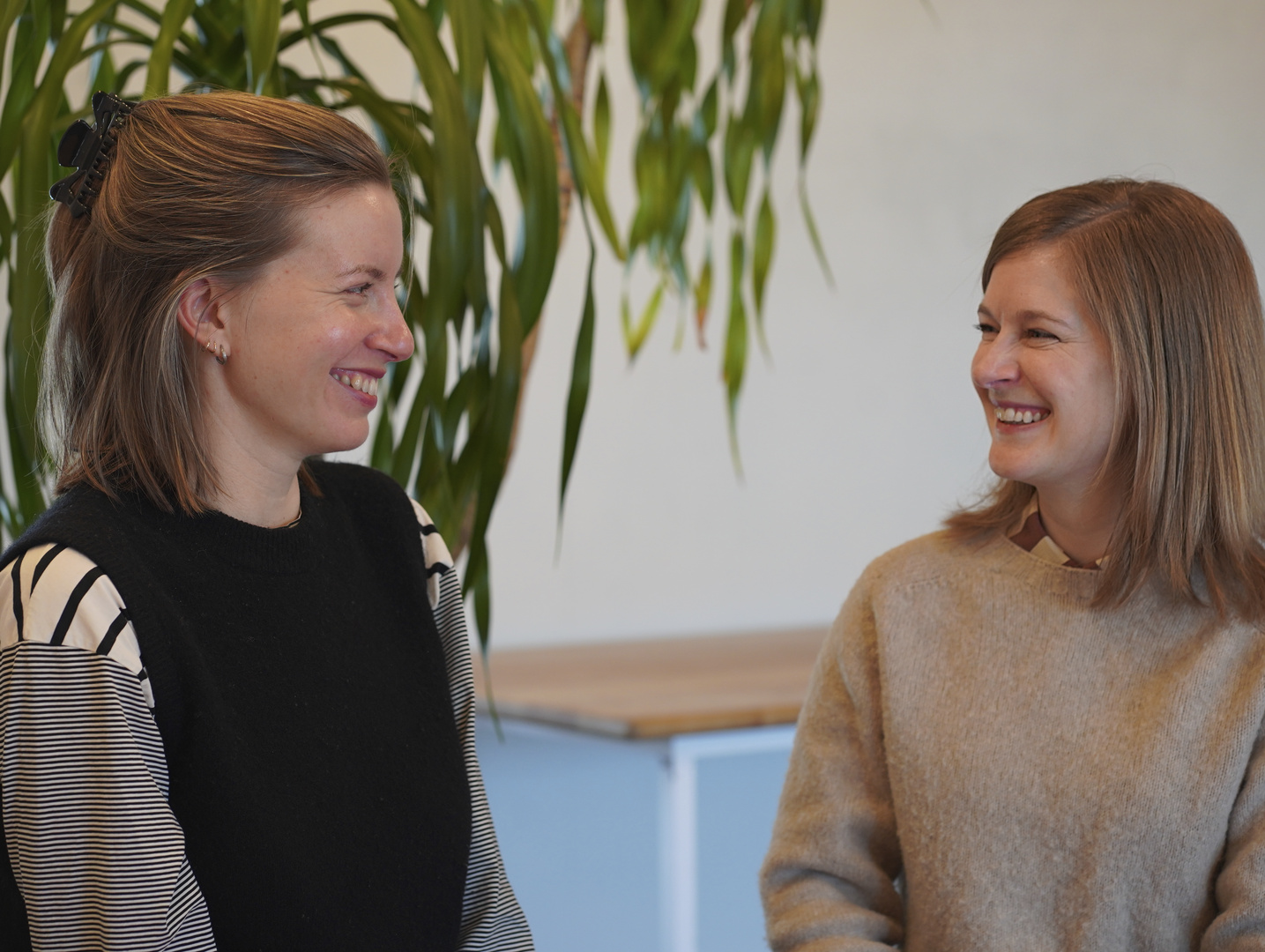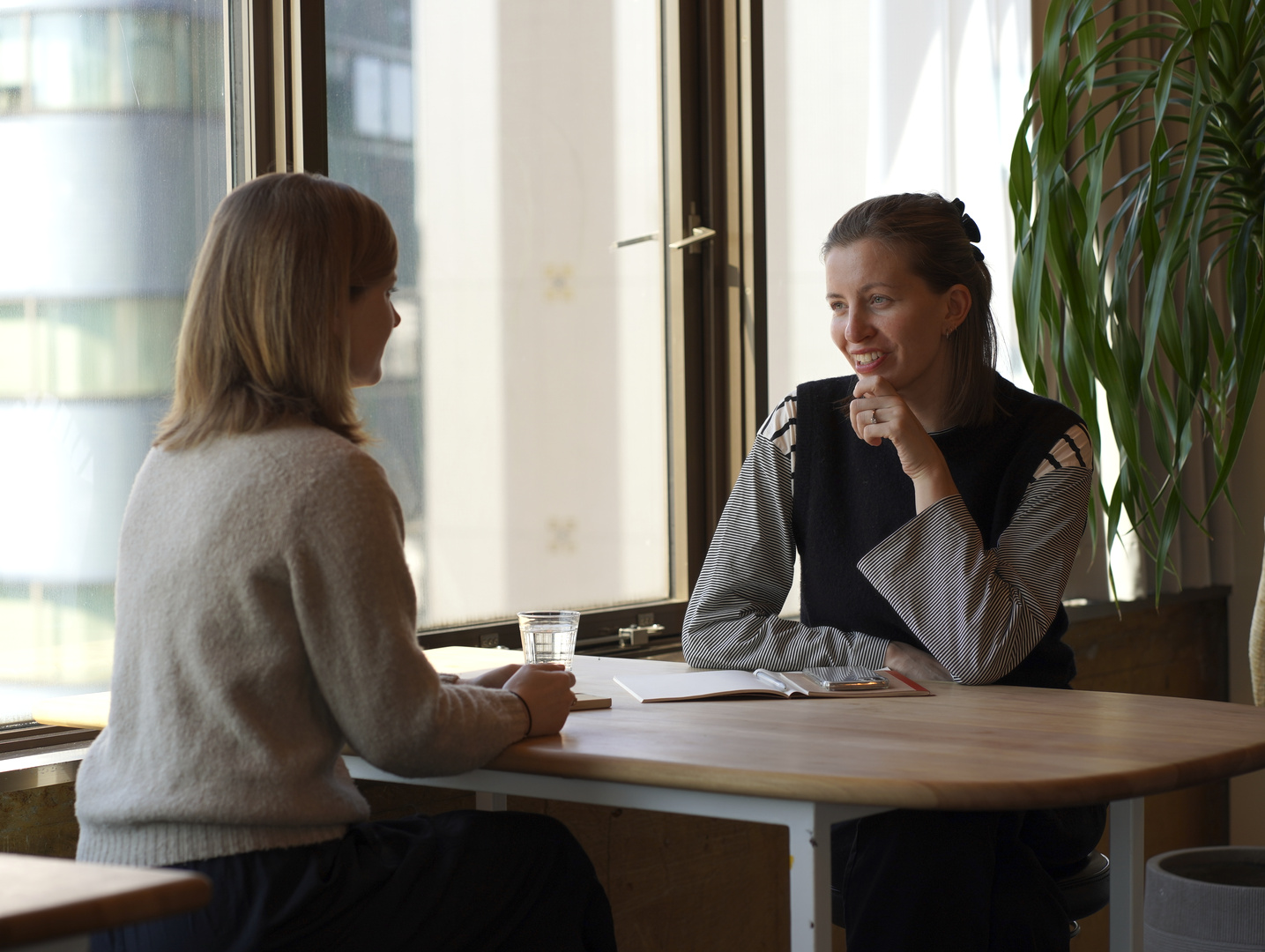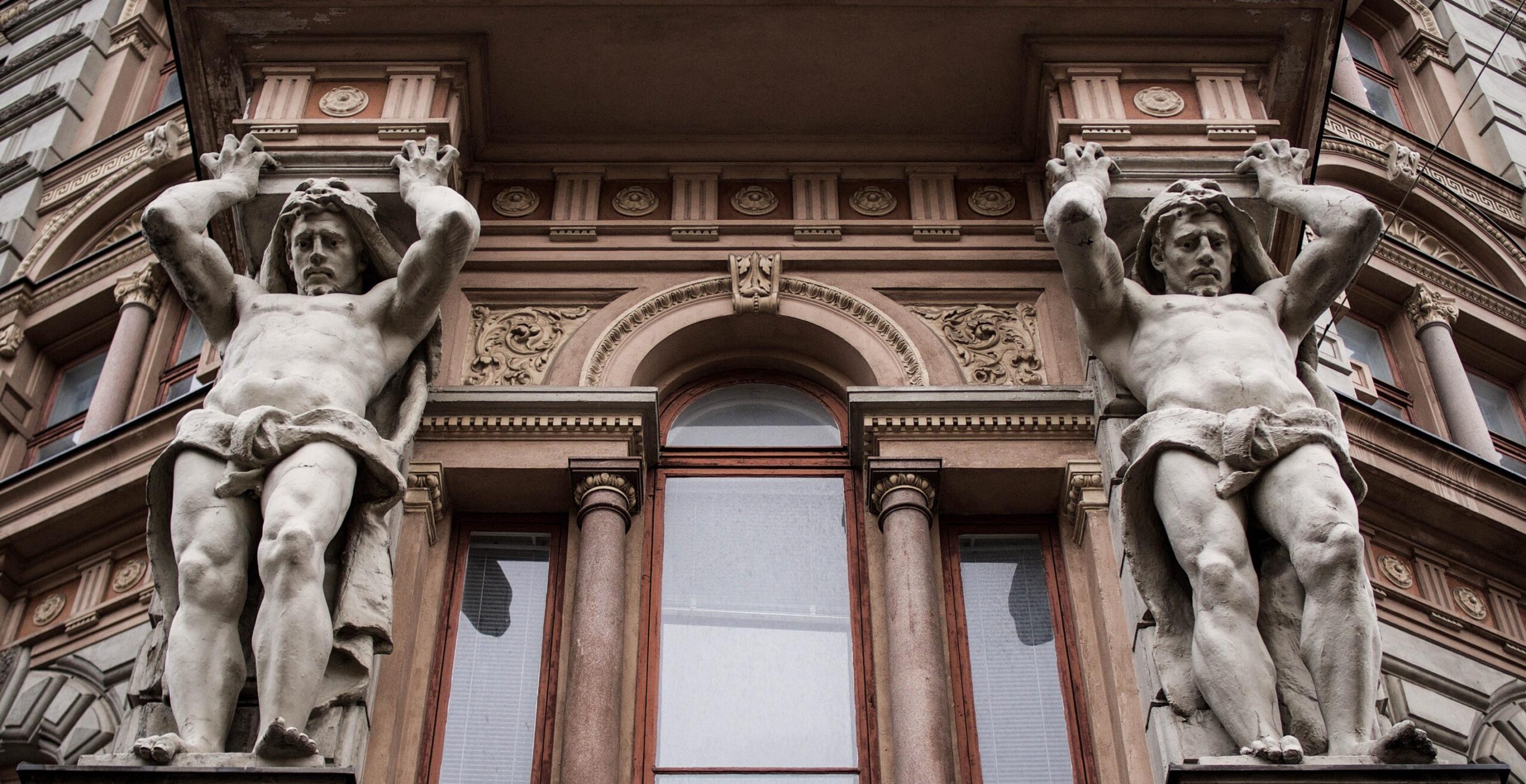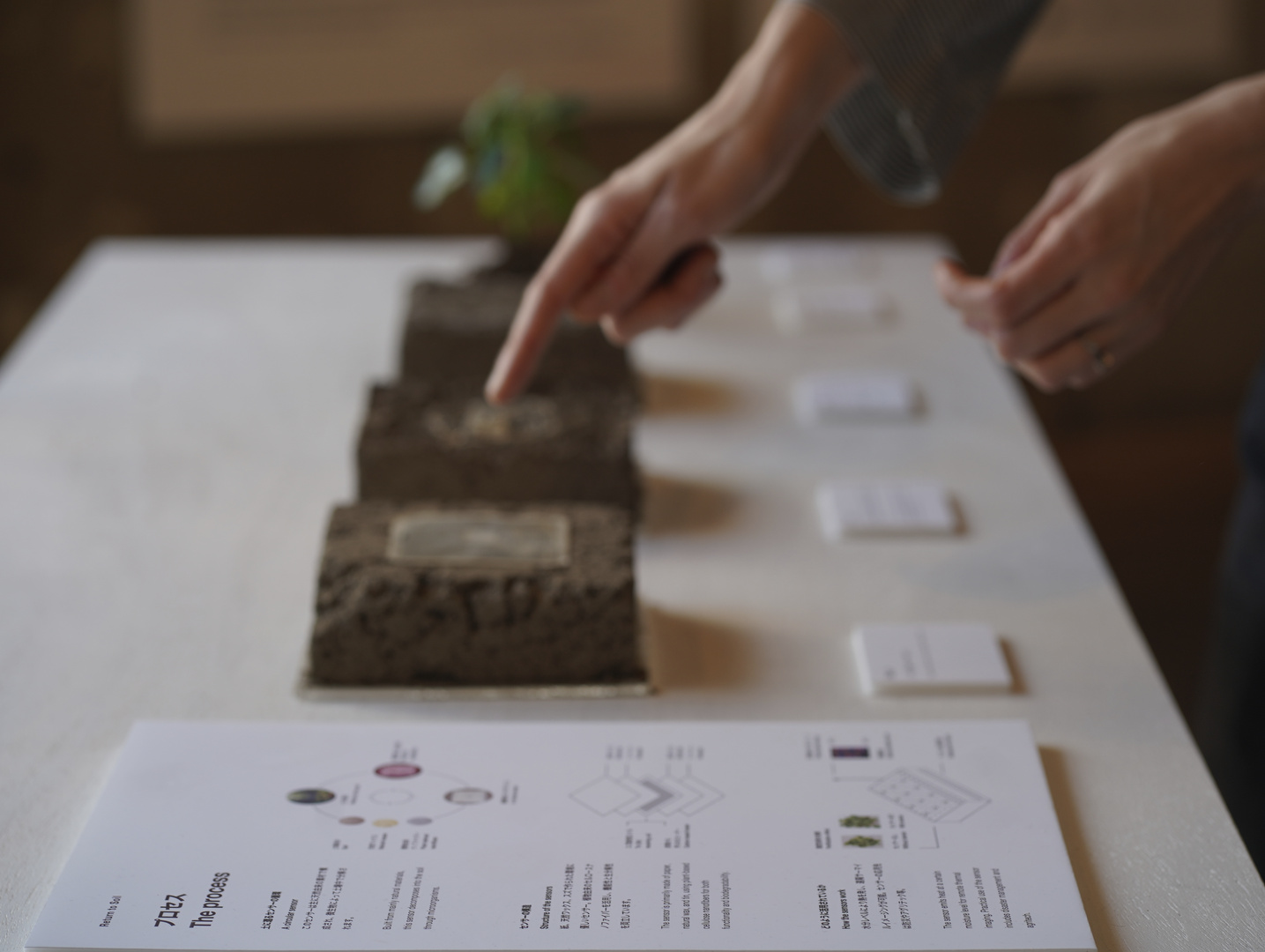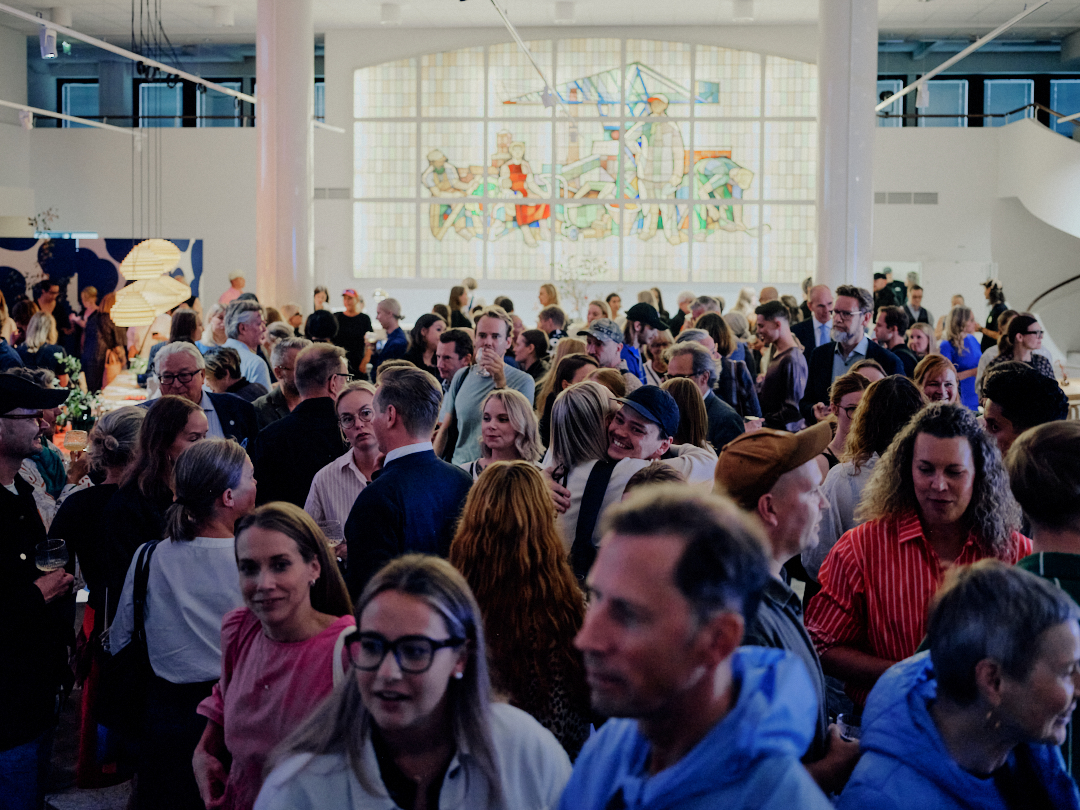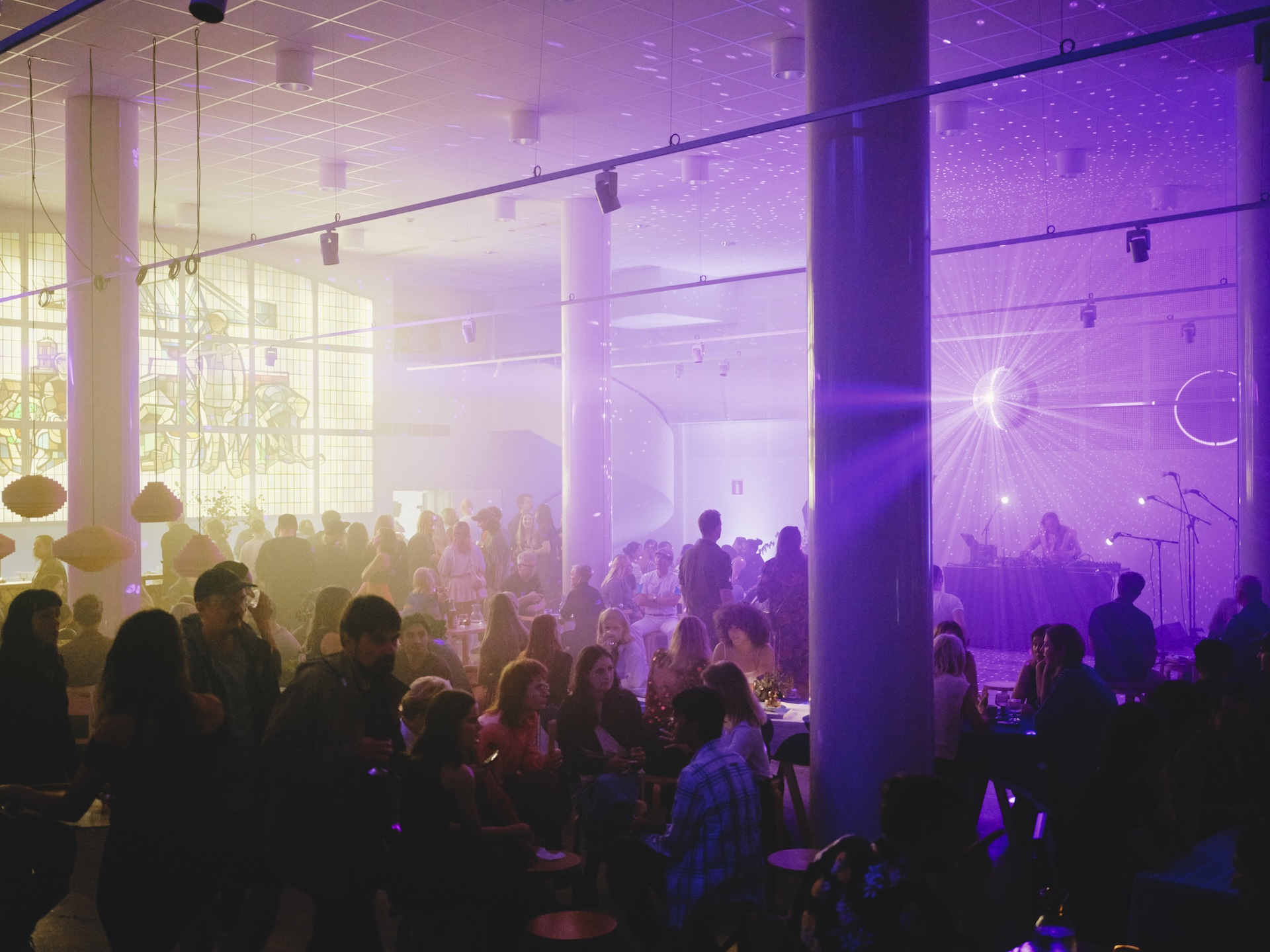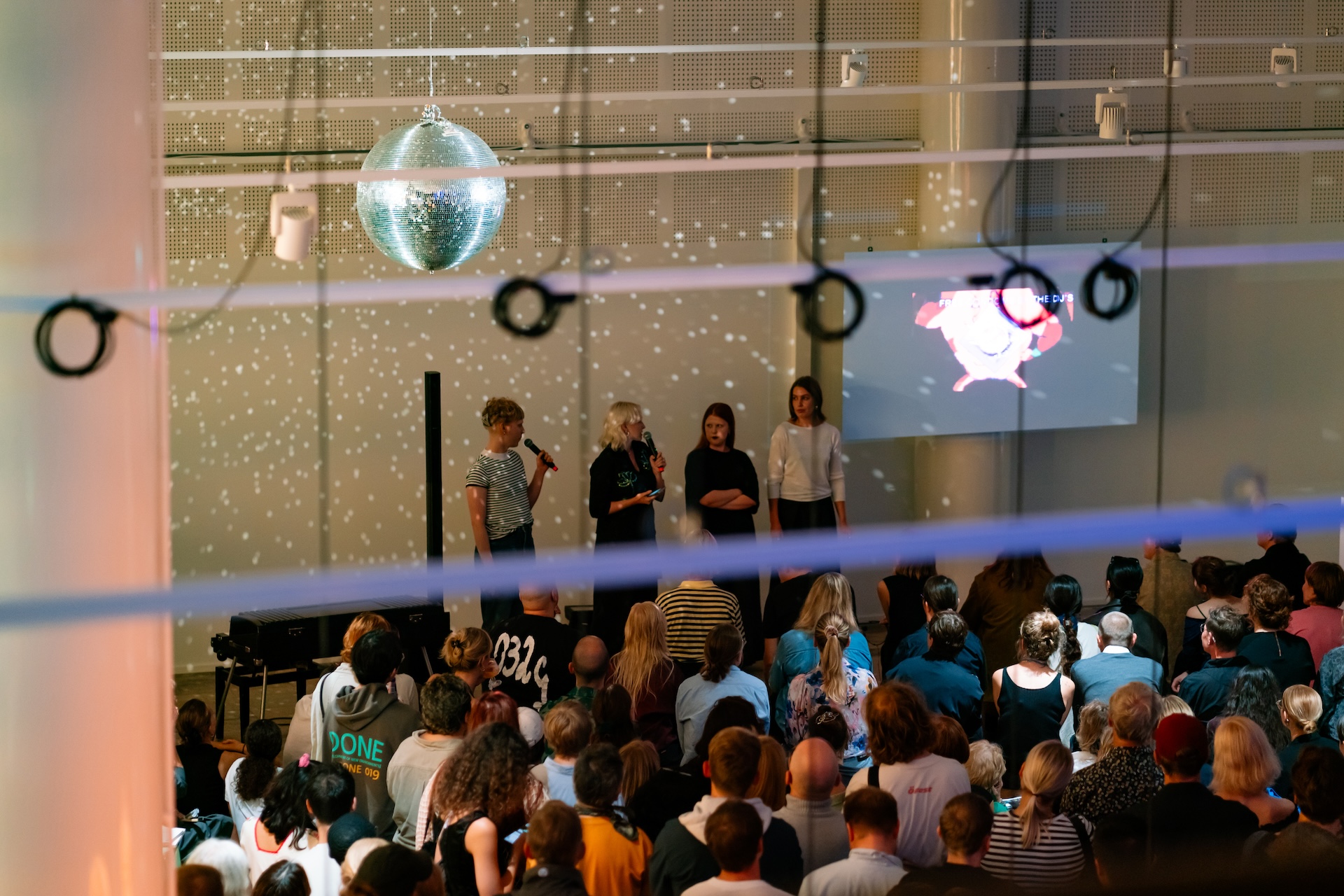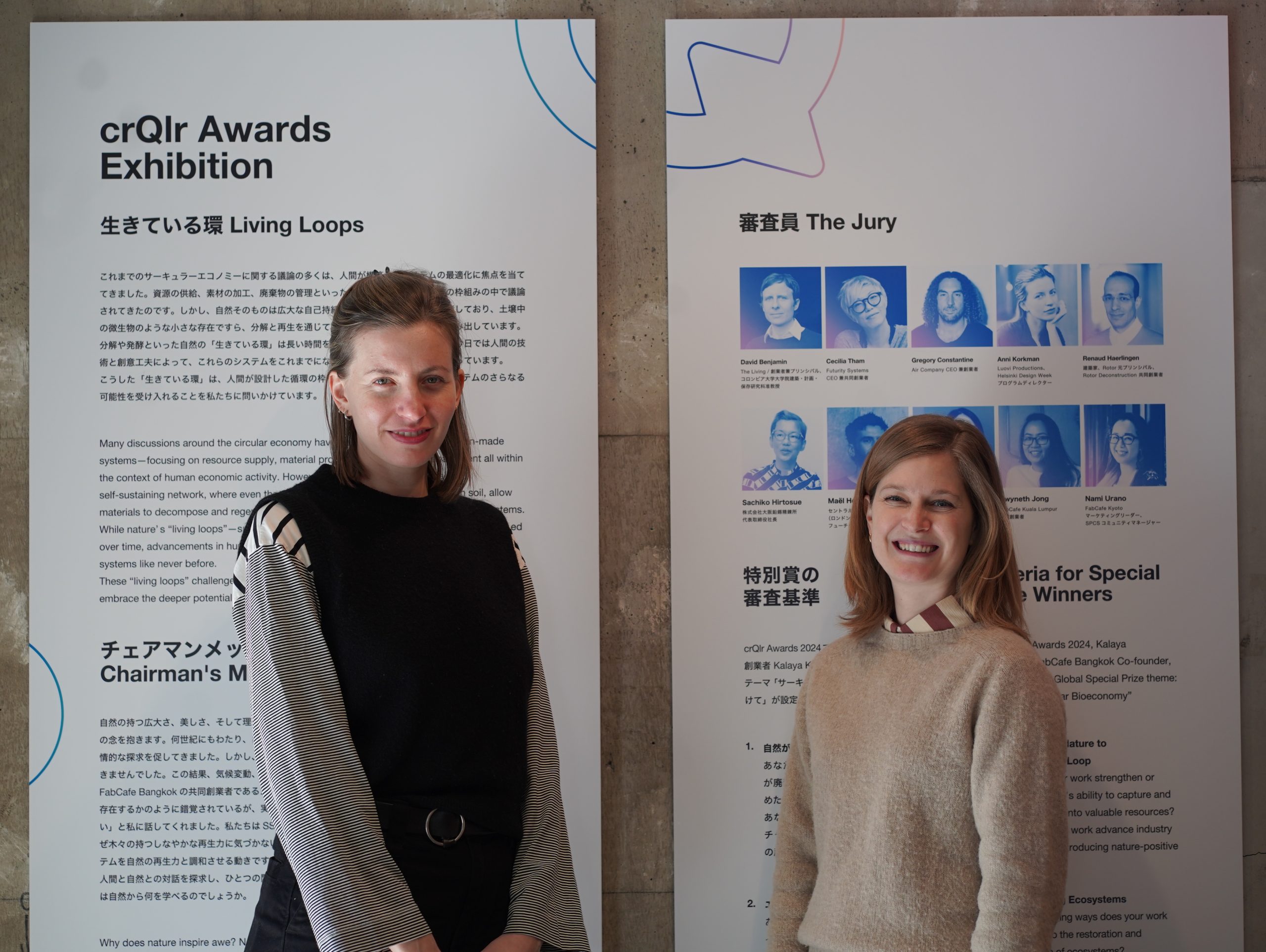Interview
September 9, 2025
FabCafe Global Editorial Team
In March 2025, Finnish designer and curator Anni Korkman came to FabCafe Tokyo to celebrate the 2024 crQlr Awards winners at the annual crQlr Awards Summit and Exhibition. The fourth annual crQlr Awards attracted scores of circular economy projects in the realms of materials, architecture, education, and more; in total, out of 140 entries from around the world, 29 submissions were selected as winners by the Judges panel. In addition to individual Judge Prizes, three applicants were selected as winners of the Special Award, this year with the theme of, “Towards a Circular Bioeconomy.” These Special Prize winning works were shown at the crQlr Awards Exhibition, Living Loops, held at FabCafe Tokyo in March 2025.
Anni Korkman is the Programme Director of Luovi Productions, the agency that produces the annual festival Helsinki Design Week. She was also one of ten crQlr Awards judges in 2024. As a designer, Anni is dedicated to improving art and design literacy in daily life. In her own words: “The more we are able to recognize design around us, the more critical to our surroundings we can become – and eventually demand for better physical and digital living environments.” Like the crQlr Awards, Helsinki Design Week attracts world-class designers in a wide variety of fields, creating a cross-cutting, transdisciplinary experience.
While in Tokyo for the exhibition, Anni was interviewed by crQlr chairman Kelsie Stewart. Their conversation touched on her thoughts on the philosophy behind the 2024 crQlr Awards, the origins and upcoming excitement of Helsinki Design Week, and Anni’s inspirations as a curator and designer.
This interview has been edited for content and clarity.
Kelsie Stewart (crQlr Chairperson): I’d like to ask about your background and how you came to be doing the work that you’re doing. What inspires you with your work at Helsinki Design Week and other art initiatives?
Anni Korkman (Programme Manager, Luovi Productions): As a student, I was studying arts and arts management in Helsinki, and I was always aware that even though Helsinki is the capital city and it’s a very, very small place in the world. So as a part of my BA studies, I moved to London to do an internship at the Finnish Cultural Institute, and there I got this first impression of scale. I decided to continue working and studying in London, in an international environment most of my twenties from when I was 21 until I was 28. That has probably been the biggest influence on my thinking now.
I was studying in the University of London in Central Saint Martin’s and it was really eye opening to be able to grow up [artistically] in an international environment. Also, my tutor [Jamie Brassett], the head of course at CSM, has been a great influence. Monday mornings, he would ask us questions: What have you noticed lately? What’s been grabbing your attention?
Working with design and architecture, it wasn’t very natural for me. But today, I realize [his influence] in the way I look at design discourse and consider design to be this valuable tool for not just improving things, structures and systems, but a way of storytelling and explaining the world.
Kelsie: One thing that struck me about this kind of practice is that it trains you as a student to notice things, but also to share. It’s the input, but it’s also the output.
Anni: And being constantly reminded of one’s own subjectivity and perspectives! It’s something that’s so strongly involved in the whole design world: the perspective of others, of having empathy towards others’ experiences, then trying to design and improve conditions and structures.
Kelsie: So you had eight years in London, and then you made your way back to Helsinki [in 2018] and started working in the family business of Helsinki Design Week. What was that journey like?
Anni: I’d always been very close to the organization, from when I was a student still in Helsinki and even during those London years. So it wasn’t like I was starting completely in a new place. But it had changed a lot, and we as an organization had to work quite hard in trying to find new structures of working.
Obviously there’s a lot of quite emotional and personal things involved, and it’s a small team — finding my professional self and personality in the shadow of my father while working very close to my father was challenging. Growing up professionally has taken us a lot of dialogue. It’s almost boring to even mention COVID-19, but it did have a big effect.
Kelsie: What were some of the effects?
Anni: Pre-COVID, we had quite a good economical situation in the Finnish design scene for our company, which has done some successful bigger events. One of our probably largest scale projects was Helsinki Design Week 2019, in which we took over an entire block of [the house Erottaja 2]. It is a historical Neo-Renaissance building in the center of Helsinki with five floors, and we made 65 different installations and programs there. The scale was insane. During those ten days [of HDW 2019] there were multiple events and talks every day, and after that, we were really confident. For the next year, we booked the Olympic Stadium, which is the grand building known by all Helsinki, built in 1953 for the Olympics.
Then COVID came. We had to really scale down. Like so many other cultural events and creative organizations and agencies, we had to change direction completely. Post-COVID, we had to look into new ways of working.
COVID was not good of course, but [that period of time] has brought us a lot of good. Even though we’d always been quite an agile, small organization, after COVID, our decision-making processes adapted. It really forced us to rethink — even though we were small and have always been quite fast, we were still quite conservative in managing the festival pre-COVID.
For example, look at the products and core of Helsinki Design Week. Certainly, it’s about the creative community that we can support and work with by presenting their work, but it’s also about communication. So if you take out the event management aspects that we couldn’t do during the pandemic, what’s left are storytelling tools, ways of connecting even during those times. We’ve now started developing our communication services into something that we can also develop and sell to our partners.
One of the central pillars of the crQlr Awards is building a community around efforts to build a circular economy. This community building includes putting crQlr Award winners in direct contact with judges through introductions, open feedback, and in-person events like the crQlr Awards Exhibition. During her conversation with Kelsie, Anni had the opportunity to tour the exhibition and see winning projects in person, including the Akasango Reef restoration project by rrreefs.
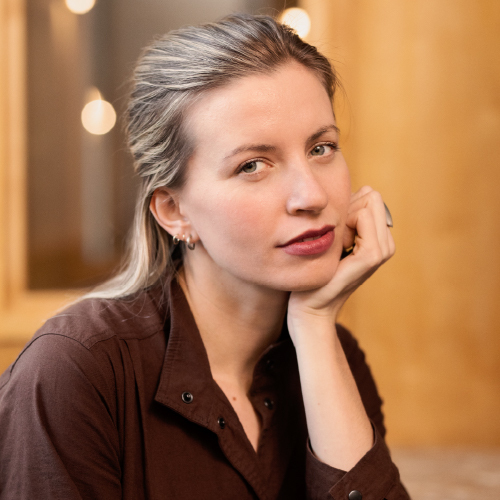
There is hope
The “The Akasango reef, an homage to the Japanese Red Coral” project is a heartbreakingly sad, yet simultaneously hopeful project. This project meets the for People, Profit and Planet criteria in a careful and considered manner.
Kelsie: Have you ever heard of this kind of project before? Or have you seen this kind of work being done around Finland in the water?
Anni: I haven’t seen it, but I’ve heard of these projects or similar ones before. But because we don’t have coral reefs in Finland, there are a lot of projects at the moment that highlight concerns about the state of the Baltic Sea. It’s the most polluted sea in the world. One big reason being some neighboring countries, overlooking international agreements regarding pollution. But then obviously [in those cases], the means, campaigns, and involvement are different.
Kelsie: What do you think about taking a nature-centric perspective in design? Would you say this is something that is becoming common in Europe or Helsinki?
Anni: Considering Finnish design identity or culture, there’s always been an element of sparsity because after the war we didn’t have any of the materials. Especially when you don’t have much, you have to make the most of it. This idea, I think, still exists in the Finnish design identity.
We have to reconsider and come up with bold new ways for the study of design and speak to [students] about it. Some won’t even bother mentioning sustainability because it’s so embedded — it’s already there. But it has to be exceeded. For me, the most interesting and inspiring projects today have that nature-driven approach. …
I’m also thinking about sustainability [through the lens of] aesthetics. It’s obvious that in the design world, we have to start realizing that perhaps in the past we’ve appreciated consistency a bit too much. The sign of quality is that all products look exactly the same. And yet, in the coming world, we’re having new methods and new materials in which you can see the patina, the wearing. That’s a completely new aesthetic approach that we have to train our eyes and minds to appreciate.
Say I buy a top. I really love it. It’s from a Finnish designer, made with nature-based coloring, and the color will fade in time. So, perhaps in the past, you would think, “Oh no, it’s worn out. I won’t use it again.” However, now, in the future, age adds value to it, because it changes. I accept that — I even embrace that.
Kelsie: The 20th year anniversary for Helsinki Design Week is this year. I saw some of the keywords that you’re honing in on: sustainability, inclusion, connecting local to global and global to local with purpose and intention. And I wonder if you can tell me a little bit about what you’re excited about. What are the boundaries that you want to push?
Anni: Well, first of all, the theme for the anniversary year is “celebration.” The narrative theme is that living in these times of crisis, we are constantly being stopped and disrupted from outside and being forced to be quite reactive. A theme of celebration asks us to take a moment for ourselves in a way that we are the subject and not the object. I will have my moment to appreciate the present and consider the future. It gives you more of a sense of agency than being completely disrupted by external things.
What we want to do with the anniversary year, which is talking about sustainability, is challenge the narrative around events [like this] as these temporary things that will disappear. Helsinki Design Week has been around for 20 years. My sister and I continue our father’s work, and we want to keep it going for at least another 20 years.
Kelsie: Amazing. Is it reflecting on the history of the festival?
Anni: I imagined a thematic trilogy. Two years ago I realized it’s really stressful to come up with a theme; it would almost be an act of sustainability to create a theme that’s ongoing for several years rather than releasing one in October, exhausted, just so we can begin planning the next one. Instead, I made a theme for three years. Because I really like stories, I thought it would be nice if the theme was also a story.
We started with the theme “Once Upon a Time,” the beginning of a story. It was an invitation for us to consider the narrative of Finnish design and reconsider it. I wanted to look at Helsinki as a whole and think, “Who are the ones that tell the story of Helsinki? Is everyone’s voice heard?” Sometimes, you only hear the loudest, you know. As designers, we have to invite everyone, so there was this question of inclusion.
And then last year, “Underneath” was the theme. We looked into the creative process, because personally, I’m not very good with dealing with uncertainty. But what I have learned of the creative process is that in the beginning, everything’s great… Then the middle is really messy, really scary and really annoying. It’s really something that you don’t want to show the world yet. That’s exactly the part that you should be showing. I want to see exhibitions of mistakes. Want to hear about how things went badly. I’m really tired of the narrative in which you [always] overcome challenges. I thought this could be relatable for others, so that was the theme last year.
So now we’ve gone from “Once Upon a Time,” and then “Underneath,” and now we’re coming into “Celebration,” which hopefully will be again something completely new and maybe something for us to look to in the future.
Kelsie: Absolutely. Making a common thread like a story, I totally agree it’s more sustainable. About “Underneath,” I think we remember our failures much more strongly than we remember our successes.It completely makes sense to hone in on this pivotal moment during the design process for others to learn from that.
Anni: Exactly.
Kelsie: But I am thinking, if you throw a stone into a pond and it creates ripples, throwing a stone of celebration, creating ripples will also eventually hit a wall. What is your response?
Anni: We are aware that at least in our Nordic bubble, people will listen to what we say — we are a platform. We have to be very mindful of what kind of energy we are putting out there. And we are very certain and proud to have that message, to be able to do this.
Then we’re back to the process, which is one of the things I’m really, really passionate about. As you know, I am also the editor in chief of our media Helsinki Design Weekly, which is a weekly newsletter, and also a radio show. And this is always the question, isn’t it? “Where do you get your inspiration from? What’s your process like?” And even though it’s a bit of a cliché and there’s not much new you can bring to that, there’s always a new approach to that question.
Also, I think that design weeks as a medium, we feel like that’s the most important thing that we can show: designers and creators’ approach and the process, not just the end result. You go to a furniture fair and you see a chair in a new color. Okay. There is a point in that for sure. And they should exist. And it’s not a critique towards them, but then there has to be more than the furniture. That has to be the whole process and the whole ecosystem.
Kelsie: Just off the top of your head, you know, what are some key questions that you hope the Helsinki Design Week 20th anniversary asks to the audience and participants? And who do you hope will join?
Anni: One thing I want to show is empowerment through inclusion. Being invited somewhere and seeing processes being opened and explained in an inviting and inclusive way. Being able to follow — whether it’s a chain of thought of a designer or an architect, someone successful, someone still learning, or just someone that you meet in the pop up bar of Helsinki Design Week. It always comes down to being able to go to someone’s head and understand them.
And I think therein lies the empowerment: being able to say, “Okay, I’m able to understand you and your way of thinking. Something will resonate in me.” It doesn’t have to be something that has an end result or a goal. It doesn’t have to be a key takeaway for my professional life. Maybe it’s just something that makes you notice things in a slightly different way the following day, or the next week or even after five or ten years. But what’s important is the idea that I’m involved, I can also do this and I’m invited to have this conversation, to think of these things.
When you take it to that level, after a certain point, it’s not even about arts any more. It’s political. It’s about your role in society — being able to understand it and make something from it or maybe just to have a think of it. If we’re not educational, then at least we are able to give some ideas. And ideas are so powerful.
Established in 2005, Helsinki Design Week is the largest design festival in the Nordic countries.
The international program features approximately 150 events every year, targeted at both professionals and the general public. It consists of signature events, companion events and satellite events ranging from parties and panels to lectures and pop-up cafes. Children’s Design Week is also an important part of the program.
2025 represents HDW’s 20th anniversary year, and the dates are 5–14 September 2025.
For more information, visit Helsinki Design Week’s official website. Stay up to date with the latest HDW info through their newsletter, Helsinki Design Weekly.
-
FabCafe Global Editorial Team
This articles is edited by FabCafe Global.
Please feel free to share your thoughts and opinions on this article with us.
→ Contact usThis articles is edited by FabCafe Global.
Please feel free to share your thoughts and opinions on this article with us.
→ Contact us

